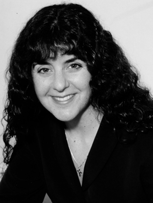With wide eyes turned upward, holding our hands, the kids were mesmerized. “Can we touch them? Can we smell them? They look like clouds!” My father and I took turns hoisting the children up to be haloed in cherry blossoms. Spring came suddenly last week, unexpectedly in full petal all at once, spiking the temperatures so much that early crocuses and forsythia are uncharacteristically blooming side by side with late tulips and Washington’s famous cherry trees. The fairyland vistas are exquisite, except for the timing.
City planners had worked hard to prepare for the 100th anniversary of the day in 1912 when Mrs. William Howard Taft, the nation’s first lady, and the wife of the Japanese ambassador planted two trees at a ceremony celebrating the gift by the Japanese city of Tokyo of 3,000 cherry trees to Washington, D.C. The anniversary celebration was not scheduled to begin for another week. Spring came anyway.
My father-in-law died suddenly last week. He was an active, vigorous man, exquisitely carving inlaid wood in his workshop till the end, but death came anyway, ready or not. Each time I pass the front hall table he made for us, I finger the edges of the inlaid leaf, a doubting Thomas with my finger in the holes, processing. One minute the children say, “Granddaddy is in heaven.” The next, our three-year-old asks when will we next visit Granddaddy at his home. My parents came for the funeral. Afterward we enjoyed a welcome respite among the trees around the newest D.C. monument, the Martin Luther King, Jr. Memorial. Visitors walk through a rectangle of granite (the mountain of despair) before coming upon Dr. King’s figure (the stone of hope). Perhaps it is my present mind-set or the timing of the liturgical year, but this felt like walking through a stone sarcophagus into blinding light, freedom and blossoms, resurrection.
The cherry blossoms also mark another anniversary. A year ago Japan’s earthquake unleashed a 65-foot wall of water that killed nearly 20,000 people suddenly and unexpectedly. The U.S. government, including military forces stationed in Japan, offered emergency humanitarian assistance, only to be caught off guard by a quickly deteriorating nuclear crisis at the Fukushima nuclear power plant. My husband, Dr. Richard Love, a U.S. government representative who works with the Japanese, was assigned to help coordinate the disaster response. We saw little of him for months.
How do you suddenly provide disaster assistance in the middle of a nuclear crisis, with no money in the midst of a budget crisis? Information and communications were challenged, both within the U.S. government and with the Japanese. The government does not have a playbook for providing assistance within a contaminated zone. My husband is helping to write one, proposing an all-hazard approach to guide future U.S. policy. Yet better planning may not help overcome the human condition. People so shocked and saddened by death may be impaired in their crisis efforts to further safeguard life. Now, a year later, the plan is for the Fukushima nuclear power plant to be covered with a concrete sarcophagus to contain the radiation.
Tomioka, the Japanese town near those nuclear reactors, was known for its cherry blossom displays. The trees are now in bloom, but no one can enjoy them; the radiation levels are too high for the inhabitants to return. Over 320,000 people displaced by the quake and tsunami are still living in temporary shelters.
I cannot imagine how my husband’s Japanese colleagues grieve for so many loved ones dead, so suddenly and unexpectedly. Here we struggle as we miss just one. But I suspect we all know the rhythm of it, first the pain of crucifixion, the sharp thump of the nail, before the light and peace of resurrection.
There is an Easter story after such suffering, though. My Catholic University students often wonder if reconciliation after war is ever really possible. Look at Fukushima, I tell them. In 1945 the United States killed Japanese civilians with atomic weapons. A year ago Americans rushed to help save Japanese civilians from a nuclear accident.
“This was so nice of the Japanese to give us such beautiful cherry trees,” our 5-year-old remarked, glittering with petals. “Is this what heaven looks like?” He may be on to something.








